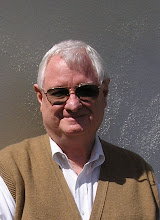In the year 1918, many of our family members fell victims to the worldwide influenza pandemic, what our folks referred to as the Spanish flu. Today we know that it was caused by a particularly dangerous virus strain given the name Influenza A - subtype HiNi. Since it remains a practice to this day to entitle a pandemic for nations or regions of the world out-of-favor, the 1918 plague was called Spanish. (Twenty years earlier America had found a war against the Spanish empire.) Somewhere between 50 and a 100 million people died worldwide.
The flu was first recorded at Fort Riley, an Army base in Kansas. Its spread was exacerbated by the movement of thousands of military recruits in the US and to Europe. People were terrified, since the disease seemed to chiefly strike down young adults. Bill Fecht who had been sent to the Army Air Corps "Spruce Battalion" in Westport, Washington wrote in later years about it.
"About this time a bad flu epidemic spread through the camps and we lost a lot of men. I had it along with pneumonia and miraculously got over it. But, was very weak for a long time. Harry Candy (husband of Anne Fecht) was to be called (drafted) so he decided to move his things - stock etc. back to Missouri. On the way his car took fire and burned everything, someplace in Montana. Harry was so overcome with heat and smoke, he only lived a couple of days after getting back there. Rose Marie (Rosemary), their only child, and Ann were there in Missouri, when Harry got back. They had gone through before he did."
(Note: Many in the family believed that Harry Candy was coming down with the flu just before leaving for Missouri.)
"When I left to return to camp everyone was improving and were a great deal better. They had a special nurse to come to the house (William C. Fecht farm in Mexico, Missouri) and care for the sick. It had been several years that I had been away from home at that time." (William, Anne, Florence and John (Jack) had all gone to Montana from Mexico, Missouri to establish homesteads.)
(Bill Fecht told his son Gerald (author of this article) that the only treatment given to the soldiers in Aberdeen, Washington was aspirin and polices made of rags soaked in kerosene (then called coal oil). The international patent rights for aspirin belonged to a Bavarian (Bayer) German Company was seized by an American corporation when WWI broke out. The Americans kept the name Bayer Aspirin. Who knows it the kerosine fumes didn't themselves add to the losses of our soldiers.)
"Jack (John David Fecht) took sick going back to Missouri. He was in military police duty at Camp Johnson, Jacksonville, Florida. He was mustered into the service at Des Moines, Iowa. I was sent to Vancouver Barracks across the river from Portland, Oregon. 10,000 of my outfit were to sail on the 28th of November. The Armistice was signed on the 11th so I missed it by 17 days. We were headed for Siberia. A good many of us were attending night school and were pretty well prepared to go over."
Note: Many of the young Americans who were to be sent to invade the newly formed Soviet Union, refused to go, so many in fact that the US government called off its attack on Russia.
Mildred Crites Fecht spoke often of the great flu of 1918. She told of popular songs about the event. One referred to two orphan children being asked by a train conductor where their mother was. It was called "Mother's In The Baggage Car Ahead." An earlier song from 1901 regained popularity. It was called "Hello Central Give Me Heaven, Cause My Mother's There." (Central was the telephone operator.) Mildred said that the winter of the flu-year was so severe and so many men were sick that coffins remained unburied until the spring and some stacked up in railroad depots.
On 3 January 2008, the following article appeared in the Los Angeles Times
Deadly secrets of 1918 flu found
Researchers have discovered what made the 1918 flu pandemic so deadly -- a group of three genes that lets the virus invade the lungs and cause pneumonia.
Scientists painstakingly substituted single genes from the 1918 virus into modern flu viruses and found that a complex of three genes helped to make the virus live and reproduce deep in the lungs, according to a study published Tuesday in the Proceedings of the National Academy of Sciences.
The three genes -- called PA, PB1, and PB2 -- along with a 1918 version of the nucleoprotein gene made modern seasonal flu kill ferrets in much the same way as the 1918 flu killed 50 million people worldwide, the researchers found
Saturday, January 3, 2009
THE FLU EPIDEMIC OF 1918
Labels:
1918,
Harry Candy,
Influenza Epidemic,
Mildred Fecht,
WILLIAM T. FECHT
Subscribe to:
Post Comments (Atom)

No comments:
Post a Comment